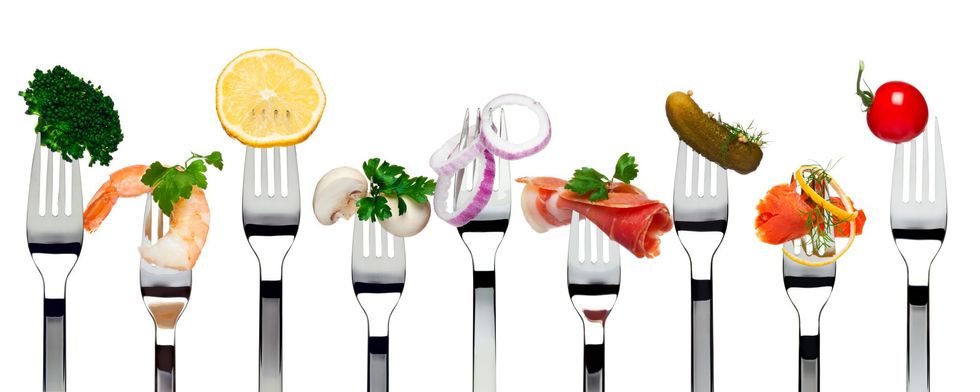
Three nutrition experts tell us how to achieve a good balance between raw and cooked food that we bring to the table.
Raw foods are more vital than cooked ones and are certainly scarce in our diet on average. How much and which food to eat raw? And how to find a good balance between raw and cooked? The word to three food experts.
“One of the problems is that we eat fewer and fewer active ingredients - vitamins, minerals, enzymes - which are lost in cooking . Above 53 degrees over 10 minutes of cooking there are practically no more vitamins. A little less sensitive to temperature are the fat-soluble ones (A, for example) - explains Dr. Alberto Fiorito, homeopath and nutritionist . The really essential things in raw version are fruit, vegetables and oil seeds. Essential! "How much to eat? “Two salads a day and two or three fruits, according to the season: no to greenhouse fruits".
“Eating a lot of salad, it will tire your jaws! We will be leaner and clearer of mind - echoes Professor Rosita Emma Carli, naturopath . At least in the evening. In a meal 50% should be salad and the rest other. We chew, chew and get to the first or second that at that point we limit ourselves, even if only for fatigue! But we are much better ".
“We must first consider the thermolabile vitamins: if you want to benefit from C, it is clear that foods must not be cooked. On the contrary, some foods must be “enhanced" with cooking : some antioxidants, for example the lycopene contained in the tomato peel, are activated only after cooking "explains Dr. Francesco Balducci, nutritionist and expert in anti-aging medicine .
Not only that: “For certain foods, cooking is the only way to eat them; if the meat is not cooked it is digested much less for example. Cooked vegetables do not ferment in the intestine , so it is advisable for people with sleep and digestion problems "- continues Fiorito - “ Raw is better food but not everyone can digest it. " When we cook food we lose a lot but there is digestibility and if we are below 100 degrees, enough nutrients are preserved. Freshly blanched vegetables, learn to eat them a little more crunchy , more duretta. Minestrone is ok: we lose vitamin C but we have the minerals that remain in the water - explains Carli.
“In general, all very cooked foods , for example baked at 180 °, trigger the Maillard reaction which produces the so-called AGE - recalls Balducci. AGEs, the end product of advanced glycosylation, are the result of a series of chemical reactions that follow glycation and are found on the toasted surfaces of foods such as roasted or fried. In addition to color, AGEs also give cooked foods the characteristic flavor, typical of baked goods. An iconic example? The crème brulée. "Devastating! AGEs (which in English also means "age"!) Are very toxic products that accelerate skin aging . Glycation is one of the most devastating aging factors - continues Balducci - Many think that only proteins are harmful at high temperatures - and it is true, woe to burnt meat, acrylamide and nitrosamines are formed, which are prisoners. But sugars at high temperatures are also devastating. In general, always reheat, cook but do not overcook : the important thing is never to burn. When the brown crust forms - even in bread - it is full of AGE. Fortunately, there are also anti-glycants; one of the most important is alpha lipoic acid ". It is a natural substance that is often taken as a supplement but is also present in foods such as red meat, offal and vegetables such as spinach, broccoli and potatoes.
So, making a balance between raw and cooked? “Like all things, balance is needed - says Carli - Starting with a large raw salad, chewing very well, then compensates for any other less healthy foods. Eat cooked foods, but always anticipate raw ones that pass much faster. Fruit at the end of the meal does not: it ferments and therefore should be eaten away from the meal or at least immediately before the meal, because in this way, finding the stomach free, it crosses it and goes into the intestine ".
A percentage division? 70% raw food and 30% cooked according to Balducci should be the proportion. A proportion certainly not easily compatible with modern lifestyles. Inverting it is the "minimum wage": “With due considerations of practicality, at least 30% of raw foods should be part of our daily diet. At least "concludes Fiorito, who in his" Health Project "(Macrolibrarsi editions) explains in a simple and really effective way how our body works and what are the tools we have available, starting with food, to improve the quality of our life .







